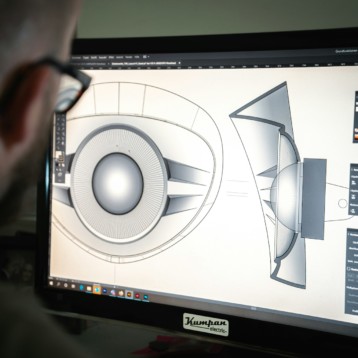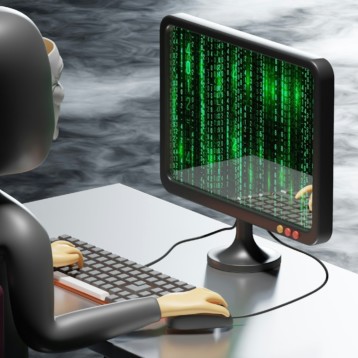A San Francisco-based startup named Leap Motion recently unveiled a groundbreaking 3D motion control system. The unit which is planned to reach the market at a cost of about $70 is set to revolutionize the way we interact with our computers in a fundamental way not unlike the touch revolution which opened the door to many mobile devices such as smartphones and tablets.
Leap represents a completely new way to interact with computers. It’s more accurate than a mouse and more sensitive than a any touchscreen and allow an extremely precise 3D gesture identification with just your hands as well as small devices such as a pencil or a pen.
–
–
Leap Motion which was founded in 2010, is often compared to Microsoft’s Kinect in terms of its functionality, however although there might be some basic resemblance, the comparison seems out of place (much like comparing the Wright’s brothers first aircraft to a Concorde). While both devices can recognize human gestures and movement in three dimension, Leap technology can actually recognize a tiny movement measuring up to a hundredth of a millimeter which according to the company s about 200 times more accurate than anything else on the market – indeed a leap forward.
–
–
At the heart of Leap there actually isn’t any new kind of hardware or even an all powerful processor, the magic actually comes from the software and the ingenious algorithms developed by the company’s CTO David Holz, who was working on his PhD in mathematics from UNC Chapel Hill and left to pursue Leap Motion. Before that, he was conducting research for NASA on fluid mechanics and somewhere along the way had several scientific breakthroughs which allowed for the creation of Leap’s unprecedented gesture recognition software accuracy.
An introduction to Leap Technology
An introduction to Leap Technology
–
Leap’s tech creates a 3D interaction space measuring about four cubic feet in size which can track any motion of your hands down to your individual fingers as well as any number of small objects (we can easily envision future software recognizing a variety of objects as well as body movements and facial recognition down to the tiniest of expressions).
A longer video demonstrating the technology
–
The hardware itself developed by Leap is said to be small about the size of a mobile phone (see image) which can be connected to a computer (PC or Mac) using USB. The price will be a very accessible $70 and the first units should start shipping in December 2012 or January 2013.
–
–
One of the most interesting things about the Leap Motion is its strategy. Instead of relying on a closed garden proprietary technology like so many companies these days, Leap is taking a leap of faith so to speak with software developers worldwide and is currently accepting applications for software developer kits (sending them to developers for free), it hope will create a full ecosystem around its product with countless applications.
–
–
More information on Leap’s technology can be found on the company’s website.











